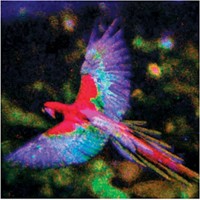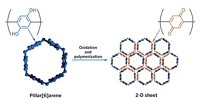Advertisement
Grab your lab coat. Let's get started
Welcome!
Welcome!
Create an account below to get 6 C&EN articles per month, receive newsletters and more - all free.
It seems this is your first time logging in online. Please enter the following information to continue.
As an ACS member you automatically get access to this site. All we need is few more details to create your reading experience.
Not you? Sign in with a different account.
Not you? Sign in with a different account.
ERROR 1
ERROR 1
ERROR 2
ERROR 2
ERROR 2
ERROR 2
ERROR 2
Password and Confirm password must match.
If you have an ACS member number, please enter it here so we can link this account to your membership. (optional)
ERROR 2
ACS values your privacy. By submitting your information, you are gaining access to C&EN and subscribing to our weekly newsletter. We use the information you provide to make your reading experience better, and we will never sell your data to third party members.
Materials
Ultrasound Makes Big Crystals Of Mercury Thiolates
Sonicating liquid mercury-alkanethiol mixtures leads to large, high-quality crystals of electronics chemicals
by Elizabeth K. Wilson
October 4, 2010
| A version of this story appeared in
Volume 88, Issue 40

An international research team has devised a synthetic strategy that employs ultrasound to produce large, high-quality single crystals of mercury thiolate (HgSR2), where R = alkane (J. Am. Chem. Soc., DOI: 10.1021/ja1056449). Mercury thiolates not only have uses in organic electronics, but they are also an interesting chemical illustration of the strong attraction between mercury and sulfur-bearing thiols. Methods typically used to make mercury thiolates involve the reaction of mercury salts with thiolates or disulfides, and they are slow and produce small crystals. Now, Joanna Aizenberg of Harvard University, Boaz Pokroy of Technion—Israel Institute of Technology, and colleagues report combining liquid mercury and alkanethiols and exposing the mixture to medium-intensity ultrasound. Within five to 10 seconds, the sonication treatment leads to mercury thiolate crystals that are two orders of magnitude larger than crystals formed by other methods. The researchers posit that sonication is crucial because the energy transmitted to the solution can induce “shedding” of Hg(SH)2 layers and then facilitate the layers’ self-assembly into large crystallites. Indeed, the group was unable to produce the crystals by vigorously stirring the same mixture for more than three hours.





Join the conversation
Contact the reporter
Submit a Letter to the Editor for publication
Engage with us on Twitter